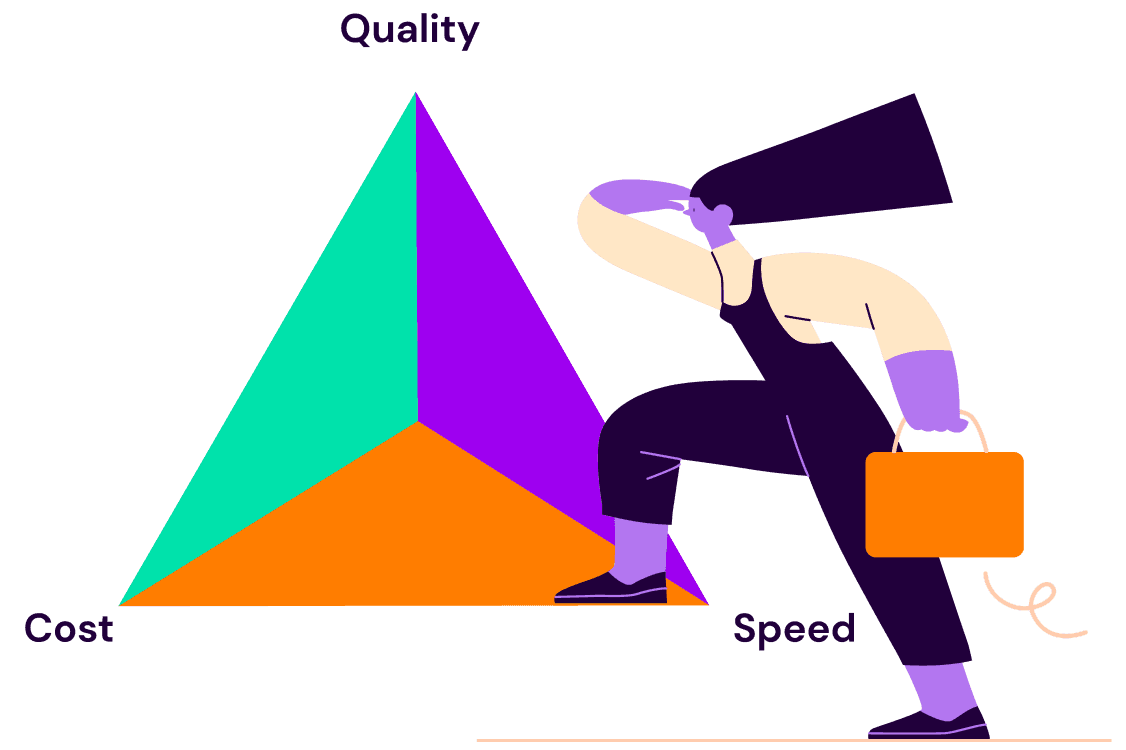
Back to blogs
The competition for healthcare talent is hotter than ever. Healthcare HR professionals face rising attrition due to the pandemic, workers nearing retirement, and on top of it all, increased competition for talent from other industries.

In 2021, 94% of healthcare CEOs ranked personnel shortages as the most urgent business problem facing hospitals. It was the first time since 2004 that financial challenges weren’t the top concern.
Recently, we partnered with the American Hospital Association to understand how healthcare HR and talent acquisition (TA) professionals are navigating this uncertainty with strategic—and creative—solutions. For our discussion, we were joined by Lindsey Breiner, System Director of Talent Acquisition at Main Line Health and Matt Craven, Manager of Talent Acquisition and Workforce Planning at PeaceHealth. Here are five learnings you can implement in your own organization in 2023.
Prefer to hear the full discussion? Watch the on-demand webinar “Health Care Talent Trends to Watch in 2023."
1. Take a data-driven approach to target candidates instead of “post and pray”
Engaging and converting passive candidates takes time and relationship-building. As Lindsey said, “Gone are the days where you ‘post and pray’ and you get this whole onslaught of individuals interested in joining the team. Sourcing now has to be a part of the bread and butter of what you’re doing every single day.”
This also changes how recruiters and hiring managers work together. Recruiters now act as strategic advisors on where to source candidates—like whether they should be conducting a regional or nationwide search based on supply and demand, or whether they should focus on specific job boards.
To do this effectively, you need to take a more targeted approach to sourcing. Lindsey explained how Main Line Health uses demographic information along with HR technology to understand where there is a surplus nursing talent or where nurses are earning less money than the nationwide average. They then target candidates in these locations and create a convincing proposition to switch jobs, and in some cases, relocate for a more desirable position. This data-driven approach leads to more efficient use of time, and a better experience for their team and the candidates.
2. Position talent professionals as brand advocates
In a competitive job market, employers need to create a “sales pitch”—a compelling value proposition on why candidates should join the organization, showcasing how individual roles contribute to the organization’s values and goals.
This starts with something as simple as your job postings. Instead of copying and pasting job descriptions, Lindsey suggests taking a more strategic approach, thinking through the length of the post, but also the impact statements.
“[You need to] showcase your employer value proposition—what they’re going to get out of joining your organization,” she said. “Get to that 100-to-150-word job posting that really leaves people wanting to connect with you, ultimately reducing the amount of ghosting that is happening.”
Another important part of that value proposition is internal expertise, particularly from the organization’s leadership. Both Lindsey and Matt spoke about positioning hiring managers and executives as “talent ambassadors” when promoting roles in spheres like social media.
“We are the brand ambassadors of our organization and so many people think that just putting a posting out there is going to attract people,” shared Matt. “The human element is what is really going to draw people to want to come and work for your organization.”
Prospects are more likely to want to work for a company whose leaders are actively engaged with the community. This also shows candidates that leaders and managers care about learning, developing, and advocating for their employees.
3. Dial up your innovation to retain nursing talent
Sourcing talent is just one piece of the puzzle. Today, healthcare HR professionals need to put as much emphasis on retention as they do on recruiting.

This time last year, the American Nurses Foundation estimated that “63% of nurses under 35 are considering or intending to leave their roles” and “at the top of the list of reasons to leave were career advancement and retirement.”
Both Matt and Lindsey emphasized the importance of listening sessions with current employees—both younger staff and staff nearing retirement—to understand what attracts them to an employer and what makes them want to stay. This is also an opportunity to gather information for workplace planning, understanding which programs or career opportunities they should invest in over the next few years to keep their employees happy.
Another key learning was career laddering, particularly for younger employees that entered the field during the pandemic who may have missed out on important clinical rotations or had to sacrifice in-person experiences for virtual experiences. Giving these employees additional educational opportunities shows them that the organization is invested in their future.
In addition to career advancement, some organizations are seeing value in creating a sense of community among employees. Main Line Health, for example, groups cohorts of new hires who are moving from other cities, so they have a built-in support base in their work and personal lives, establishing a positive culture while increasing retention.
4. Nurture the next generation of healthcare workers
Part of being strategic is thinking ahead. Healthcare HR professionals aren’t just thinking about the current state of healthcare recruiting, they’re planning years in advance, nurturing the next generation of healthcare workers.
Some healthcare systems are implementing public-private partnerships with educational institutions. For example, University of South Carolina’s College of Nursing entered a partnership with the Lexington Medical Center to build a new facility on the hospital’s campus for nursing simulation and clinical training. This promises an 80% annual increase of nursing graduates to help address the talent shortage in the area.
Healthcare TA professionals are also reaching out to high schools and colleges to educate students on the vast opportunities in healthcare that extend beyond nursing and provider roles, like IT, marketing, administration, and more.
“It's going to be our job as healthcare professionals—and our in our industry in general—to go out there and talk to kids at an early age in high school and in college to really engage them on opportunities that we have in healthcare,” shared Matt.
Healthcare TA professionals have an active role in suggesting and implementing these new strategies, planting the seeds that will impact the healthcare recruiting funnel for years to come.
5. Think differently about workplace flexibility
Healthcare providers, like doctors and nurses, are looking for additional flexibility in their work schedule, including more options for part-time work. With advancements in telehealth, this is becoming a more realistic option for some healthcare staff.
For non-nursing roles, healthcare TA professionals are considering different ways to attract talent, starting with workplace flexibility. Since non-provider roles don’t always require in-person work, remote opportunities are proving to be an effective way to attract and retain top healthcare talent.
Transitioning these roles into hybrid or fully remote roles “ultimately gives them the flexibility they’re asking for, but it [also] opens up the talent funnel,” said Lindsey. Remote work can also result in time and cost-savings since recruiters aren’t restricted to candidates from a particular city or state.
Learn more about healthcare staffing trends impacting your TA strategy
Watch the full webinar for more learnings on how to prepare for the impacts of important trends in the healthcare talent landscape. For a more in-depth report, check out our eBook, Healthcare staffing trends to watch in 2023.
See us in action
Learn how SeekOut unifies people data to help organizations reach their talent goals
Request a demo




